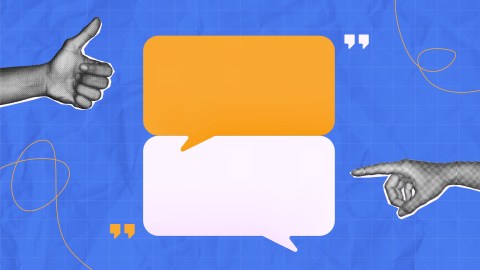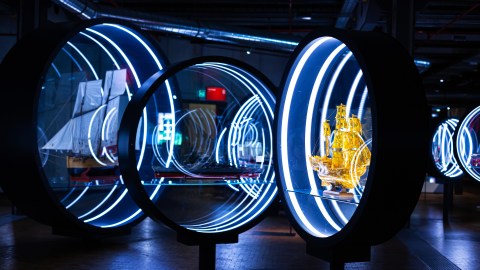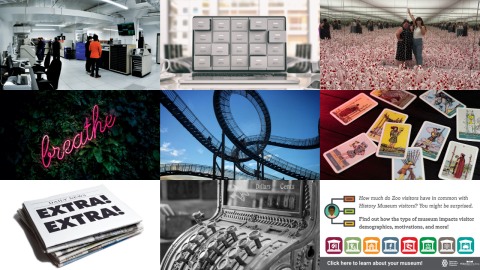I wish I could preview my Inbox from 2036. How come Outlook doesn’t have an option for that?
As a member of AAM’s staff Ethics Taskforce, I help answer plaintive, irate, indignant and panicked questions that come over our email. So I have a pretty good handle on what people grapple with, day to day, in their organizations. Forecasting the Future of Museum Ethics, CFM’s joint project with the Institute for Museum Ethics, is trying to determine what museums will be grappling with 25 years from now. How can the field provide backup and support for colleagues if we lag five or ten years behind the issues? This is our chance to gear up for the ethical future. And this is my pitch for you to help by weighing in on the public version of the forecast.
Our expert and public forecasters have identified accessibility as an important ethics issue that will change significantly, in some way, in the coming decades. Reading through their (copious) comments on the forecast’s early rounds, it became clear that “accessibility,” as used by the forecasters, encompasses at least four different things:
- Physical and intellectual access to museums, their exhibits, programs and services
- Economic access to museums, their exhibits, programs and services
- Accessibility of collections and data
- Balancing access to collections against a responsibility to preserve collections
Forecasters raised some interesting questions. Is there an ethical obligation to make museums economically accessible (i.e., affordable), paralleling the obligation (aside from the legal requirements) that museums provide physical access to people with disabilities? Has technology, by making it feasible for museums to provide public access to huge amounts of data, created an ethical imperative for them to do so?
Some of the most heated comments that surfaced in earlier rounds of the forecast were about: access v. preservation. “Many visitors express a desire for increased access—a chance to touch objects, behind the scenes tours, etc.” commented one forecaster. “Has the pendulum swung too far toward preservation, and is it in the process of swinging back?”
Access always compromises preservation to some extent. The safest storage environment is the proverbial black box. But if no one ever accesses a collections object, how is that different from the object never existing? (Someone should modify Schrödinger’s cat dilemma to apply to museum storage.)
That’s an exaggeration, of course. No object is going to last forever, and no sane museum is going to let an object be torn to pieces by ravening fans. But where, in between, is a reasonable compromise? Has preservation historically been privileged over access (as our forecaster observed) and is our position as a field on that balance of power on the verge of changing?
To test whether the pendulum is about to reverse its arc, the current round of the forecast asks:
“Thinking about the ethics of balancing a responsibility to make collections physically accessible with a responsibility to preserve collections, do you feel that in the next twenty five (25) years museum standards will tilt more towards access or preservation?”
(Respondents select an answer on a scale that runs from Favoring more access through to Favoring Preservation.)
I hope you will weigh in on this issue—either using the comments section below or (even better) using this link to access the public version of round 3 of the ethics forecast, where you can answer this and other questions.
If you are just now reading our forecast, you can get up to speed by reading earlier posts about the project.









Museums are madly digitising their collections to attempt to improve access. In this situation, we probably should pay serious attention to the relative level of demand for digital compared to physical access to collections. Is digitisation sufficient? If so, maybe Hesseltine was right 50+ years ago to argue that efforts to preserve museum collections are a "colossal waste of time." He recommended photography so that the objects could then be thrown in the trash.
Physical access needs training for the participants–not only in care and handling but in the theory and practice of material history.
Process note: I would appreciate the ability to go back and forth from my comment to the original post. I don't have a photographic memory and a rereading of the post would be helpful to complete my thoughts in a properly considered manner. I anticipate that attempting to do this from here would lose my keystrokes to this point, so I will not risk it.
So good to be able, via twitter, to connect with you, your thinking and your work. The Earth Charter, http://www.earthcharter.org is about sustainability, justice and peace and museums are so vital for teaching us about the future. We have to learn from the past for the future. The issues you raise are fundamental.
Most of the evidence, I believe, does suggest that the opportunity to see and even handle is special -numinous, or with 'aura' (Walter Benjamin) Photographs can't replace this,
Ugh. Tiresome. Since 1976 I have heard this either/or conversation. We could shift to Jim Collins' Brilliance of And: we will be accountable for our collections and we will make them accessible. We will protect those that need not to be touched and we will sensibly open our cupboards, closets, and stores as often as makes sense. And we will make stuff available online, onsite, and offsite, in the name of Nina Simon, Maria Malaro, and Ford Bell.